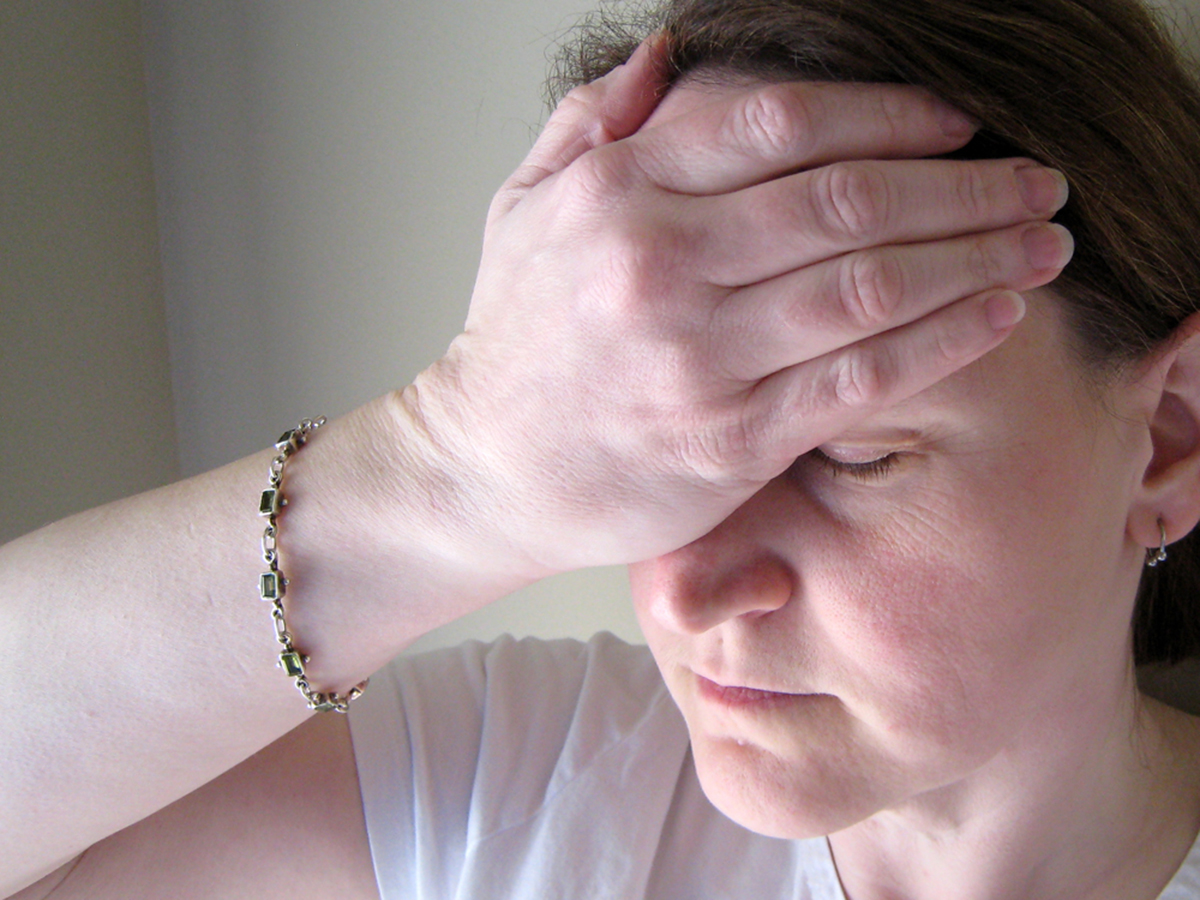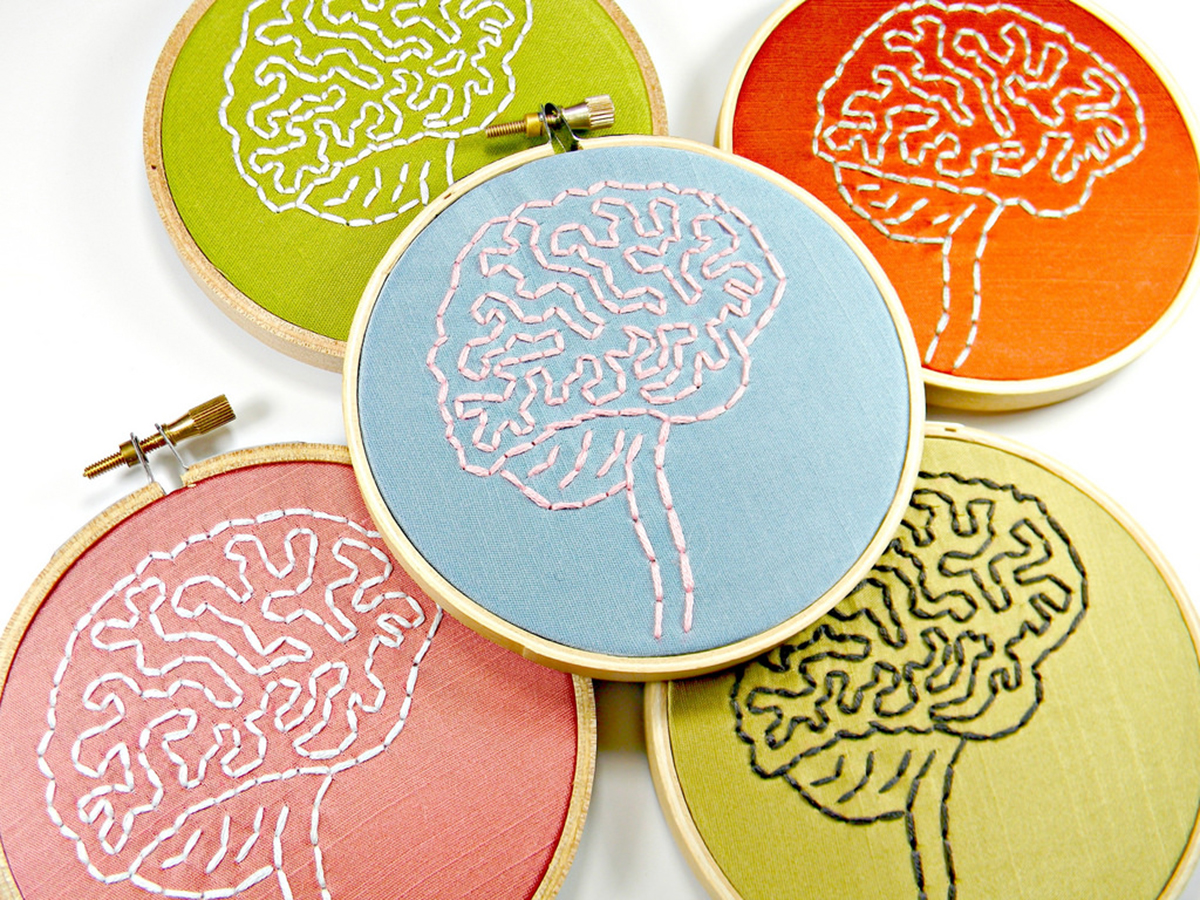Concussions are common enough — chances are that you've either had one yourself or know someone who did, especially if you participate in contact sports like boxing or American football or do a job in which workplace falls aren't uncommon. Approximately 1.6 to 3.8 million Americans suffer a sport-related concussion each year but concussions can, essentially, occur after any impact to the head in which your brain rapidly shakes back and forth in your skull.
We tend to think of concussions as annoying and slightly worrying, but not something that puts your long-term health at serious risk. Are we right in thinking that concussions aren't really that bad, or should we re-examine the potential consequences of this minor brain injury?

What Concussions Do To The Brain And Beyond
A concussion, as you probably know already, is caused by mechanical forces that lead to temporary brain dysfunction. While many people assume that concussions always involve a loss of consciousness immediately after the accident, this isn't actually true — though some people do lose consciousness, others don't.
The symptoms someone with concussion experiences depend on the severity of the injury. Besides possible loss of consciouness, people who have suffered a concussion may feel confused, dizzy, and drowsy. They may experience memory problems, headache, blurred or double vision, nausea and vomiting, and balance problems. The commonly offered advice to keep people who may have had a concussion in a dark, quiet room comes from the fact that concussions can make people sensitive to light and sound. They may also show a slowed reaction to stimuli.
Recent studies point to an upward trend in concussions. The statistics, however, should be interpreted cautiously: as awareness of concussion symptoms has increased, so has the rate of reported concussions. This does not necessarily mean more people get concussions now. It could simply mean more people seek medical attention for them.
Concussion commonly occurs in contact sports such as American football, rugby, hockey, martial arts, football and basketball, with the greatest risks reported in equestrian sports due to falls. About 80 percent or more of the athletes who sustain a concussion recover within seven to 10 days. In some cases, however, the symptoms may persist for a very long time, weeks and even months. Concussions are more common in women than in men in the same or similar sports. The course of the injury is more difficult and longer-lasting in children compared to adult patients. Small children and elderly people are in the highest risk category, due to frequent falls.
Concussion May Impair Mental Health
The prevalence of head injuries is important because traumatic brain injuries have been identified as a risk factor increasing the chances of future development of neurodegenerative disorders, such as Alzheimer’s disease and Parkinson’s syndrome, as well as a number of other psychiatric conditions including clinical depression, among others. The experts examining the effects of concussion on athletes concluded that even one concussion of the brain can create damage that will last a life time.
READ Alzheimer's Dementia: Signs, Symptoms and Treatment Options
Concussion On The Spectrum Of Neurodegenerative Disorders
Dementia is defined as a neurodegenerative disorder that causes a loss of brain function. It affects brain processes such as memory, thinking, language, judgment and behavior. According to recent research data, dementia in athletes who suffered recurrent concussions may not show up until 10 to 30 years after the concussive incidents. Athletes who sustained multiple concussions were shown to have a five-fold increase in the prevalence of mild cognitive impairment.
How That Concussion May Affect You Decades Later
Many athletes are diagnosed with clinical dementia 10 to 30 years after retirement. A few years ago, researchers specifically studied people who had sustained a concussion more than 30 years prior to retirement and compared them with those who had no previous history of concussions. The results showed decreased performance in memory skills and response inhibition, as well as delayed bradykinesia (movement velocity).
One retrospective study found that individuals with a history of concussions had a higher than average prevalence of Alzheimer's disease pathologies observed at autopsy. The pathological features linked to Alzheimer’s disease (such as an accumulation of amyloid-beta) are formed in the brain long before the disease starts to manifest itself. Certain brain mechanisms help to compensate potential damage and avoid clearly manifested brain dysfunctions, but with time the disease still tends to progress.

Late Effects Of Repetitive Concussive Injuries
Chronic Traumatic Encephalopathy (CTE) is a neurodegenerative disease thought to be caused, at least in part, by repetitive brain trauma, including concussive and sub-concussive injuries. Clinical symptoms of CTE tend to emerge later in life, most commonly years after athletes finish their sports career. Based on a recent review of neuropathologically confirmed CTE in athletes, the mean age at disease onset is 42.8 years, although the range of ages is very broad and some people may develop disease-associated symptoms very early in life.
How Can Athletic Trainers Preventing The Impact Of Sport-Related Concussion?
Coaches and trainers often allow an athlete to return to play or practice if the obvious symptoms of a concussion, such as disorientation and uncoordinated movements, disappear within 15 minutes after the injury.
A concussion is considered one of the most complex injuries in sport for the diagnosis, evaluation and treatment. Athletic trainers must understand that concussion causes ultrastructural changes in the brain and that these changes are not large enough to be visible when neuroimaging methods such as an MRI or CT scan are used.
Athletes who sustain one concussion are three to six times more likely to sustain a second concussion. As an athletic trainer, physician, or other medical professional, understanding this statistic and an individual athlete's previous history of concussions is very important. By being aware of this, trainers can decrease the likelihood of concussions.
Concussion should be identified, treated and managed correctly. Failure to do so can potentially have serious short and long‐term consequences. Since concussions are the result of accidents, preventing their occurrence is tricky.
READ 6 Alternative Treatments for Alzheimer's Disease
However, adequate conditioning, all‐year round neck strengthening, good tackle and ruck techniques, abiding by the rules of the game, appropriate use of equipment and a concussion policy that players, coaches, referees and supporters understand, all have the potential of helping in significantly reducing the risks.
- Guskiewicz KM, Marshall SW, Bailes J, McCrea M, Cantu RC, Randolph C, Jordan BD. (2005). Association Between Recurrent Concussion and Late-Life Cognitive Impairment in Retired Professional Football Players. Neurosurgery 57: 719-26
- Khurana V, Kaye A. (2012). An overview of concussion in sport. Journal Of Clinical Neuroscience: Official Journal Of The Neurosurgical Society Of Australasia. 19(1):1-11
- Webbe F, Barth J. (2003). Short-term and long-term outcome of athletic closed head injuries. Clin Sports Med. 22(3):577-592. Reeves R, Panguluri R. (2011). Neuropsychiatric complications of traumatic brain injury. J Psychosoc Nurs Ment Health Serv. 49(3):42-50
- De Beaumont L, Théoret H, Lassonde M, et al. (2009). Brain function decline in healthy retired athletes who sustained their last sports concussion in early adulthood. Brain: A Journal Of Neurology. 132(Pt 3):695-708
- Jellinger KA, Paulus W, Wrocklage C, Litvan I. (2001). Effects of closed traumatic brain injury and genetic factors on the development of Alzheimer's disease. Eur J Neurol. 8(6):707-10
- Bower JH, Maraganore DM, Peterson BJ, McDonnell SK, Ahlskog JE, Rocca WA. (2003). Head trauma preceding PD: a case-control study. Neurology. 60(10):1610–1615
- Baugh CM, Stamm JM, Riley DO, Gavett BE, Shenton ME, Lin A, Nowinski CJ, Cantu RC, McKee AC, Stern RA. (2012). Chronic traumatic encephalopathy: neurodegeneration following repetitive concussive and subconcussive brain trauma. Brain Imaging Behav. 6(2):244-54
- McKee A, Cantu R, Nowinski C, et al. (2009). Chronic traumatic encephalopathy in athletes: progressive tauopathy after repetitive head injury. J Neuropathol Exp Neurol. 68:709–35.
- Photo courtesy of C Jill Reed via Flickr: www.flickr.com/photos/mulmatsherm/3210578263
- Photo courtesy of Hey Paul Studios via Flickr: www.flickr.com/photos/hey__paul/14043023409


Your thoughts on this